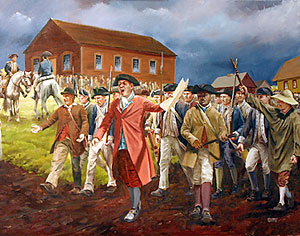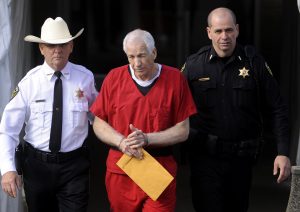
The Articles of Confederation were created by the United States in an act to form a written constitution in 1777. Ratified in 1781, the Articles seemed a little too centralized and overpowering for the States.1 In addition to the Articles, the United States had just ended the Revolutionary War in 1783. Between 1783 and 1786, a number of events took place that led to one of the United States’ most influential rebellions in its history.
After the Revolutionary War ended, it was a very stressful time for the states. These stresses stemmed from a lack of money, resources, and effective government. Each state saw that the government under the Articles of Confederation was not working well in many ways. Many states found themselves with little money, while some saw a corrupt government. In Massachusetts, citizens saw three distinct factors that led to the famous Shays’ Rebellion: a weak national government, a problem involving currency, and the poverty of the citizens of Massachusetts in the aftermath of the war.2 These three factors sum up the problems each state was having. These factors contributed to the aggressiveness of many in Massachusetts. These factors caused the states to become more divided, and it led them to become more independent rather than more united.3 This led to an absence of many states’ involvement in the national Congress, their ability to enforce laws decreased, and most refused to pay for their own delegates’ fees for their participation in Congress when in session.4
When the Articles of Confederation were created, an alliance among the thirteen independent states was established to officially declare the formation of the United States.5 Congress’s power over the States was always limited and weak under those Articles. However, Congress could declare war; but the states simply began not allowing enlistments, limiting Congress’s ability to build an army. Provisions such as these in the Articles of Confederation severely weakened Congress and caused the states to quickly become distant. Some states used different currencies than others, which made it very hard for trade and commerce.6 This difference in currency between States led to many problems in Massachusetts.

As time went on, the calling for rebellion soon reached Massachusetts. One man, Daniel Shays, took it upon himself to speak out against the wrongs of the government, thus initiating the beginning of the rebellion. Daniel Shays was a gold-handed sword award holder for his being Captain in the Revolutionary War. His involvement in the war and in politics created a base from which he could speak out.7 Soon more people joined the revolt and a clear reasoning for the rebellion was laid out. Specific members took it upon themselves to make their views known by speaking out about the problems of the Articles of Confederation and National Government. Resulting in the rebellion beginning in 1786 near the Massachusetts area.
Massachusetts saw state poverty at its lowest, where some farmers even lost their farms due to bad harvests. This brought up the thought of change. The rebellion brought out the debt of the states and the impact of war. The war sent the states into more debt with the cost of war and state governments, and this sent a huge wave of calling for the re-shaping of the Articles of Confederation.8 From this, the rebels soon closed the courts from collection of taxes, and began to shut out commerce from the states.9 This set off a series of debates and reform at the national level. In due time, the reforming would change the future of the United States.10 Its impact on American policy and government still has effects today.
- Jack Rakove, “The Legacy of the Articles of Confederation,” Publius 12, no. 4 (1982): 45. ↵
- Jonathan Smith, “The Depression of 1785 and Daniel Shays’ Rebellion,” The William and Mary Quarterly 5, no. 1 (1948): 78. ↵
- Jonathan Smith, “The Depression of 1785 and Daniel Shays’ Rebellion,” The William and Mary Quarterly 5, no. 1 (1948): 78. ↵
- Jonathan Smith, “The Depression of 1785 and Daniel Shays’ Rebellion,” The William and Mary Quarterly 5, no. 1 (1948): 78. ↵
- Jonathon Smith, “The Depression of 1785 and Daniel Shays’ Rebellion,” The William and Mary Quarterly 5, no. 1 (1948): 79. ↵
- Jonathon Smith, “The Depression of 1785 and Daniel Shays’ Rebellion,” The William and Mary Quarterly 5, no. 1 (1948): 79. ↵
- Sidney Kaplan, “A Negro Veteran in Shays’ Rebellion,” The Journal of Negro History 33, no. 2 (1948): 123. ↵
- Jonathon Smith, “The Depression of 1785 and Daniel Shays’ Rebellion,” The William and Mary Quarterly 5, no. 1 (1948): 80. ↵
- Raymond Starr, The History Teacher 15, no. 3 (1982): 456. ↵
- Robert A Gross, The New England Quarterly 76, no. 1 (2003): 126. ↵



31 comments
Trey Whitworth
The fact that division and discontent among the states played a role in the formation of Shays’ Rebellion is intriguing and especially poignant regarding the current political situation, especially the election we just went through.